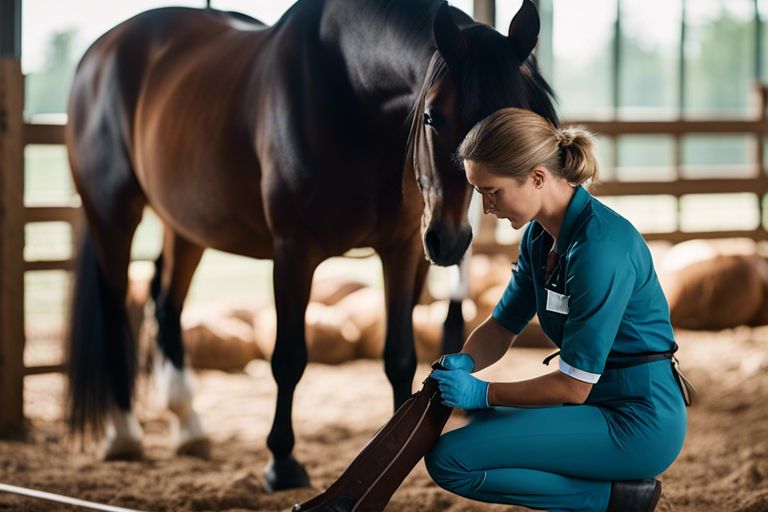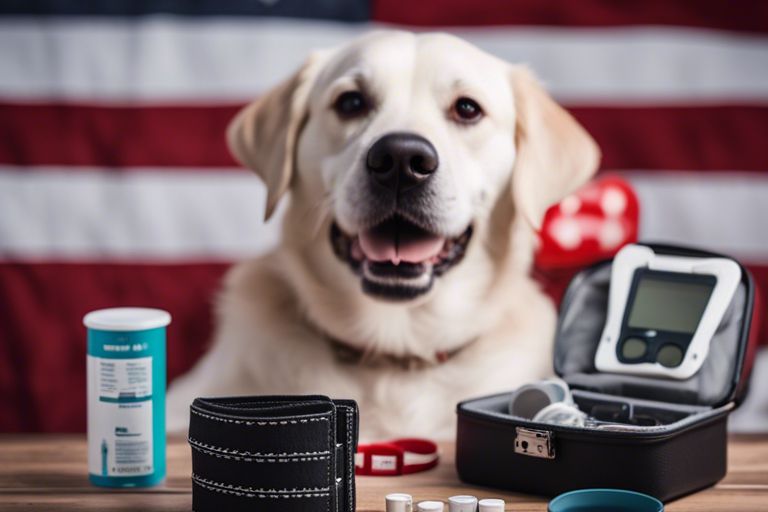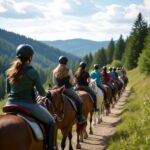You have just found out that your beloved horse is injured, and you are looking for strategies to help them rehabilitate and get back on their feet. In this blog post, we will discuss various methods and techniques that can aid in the recovery process, ensuring your horse heals properly and returns to their healthy and happy self.
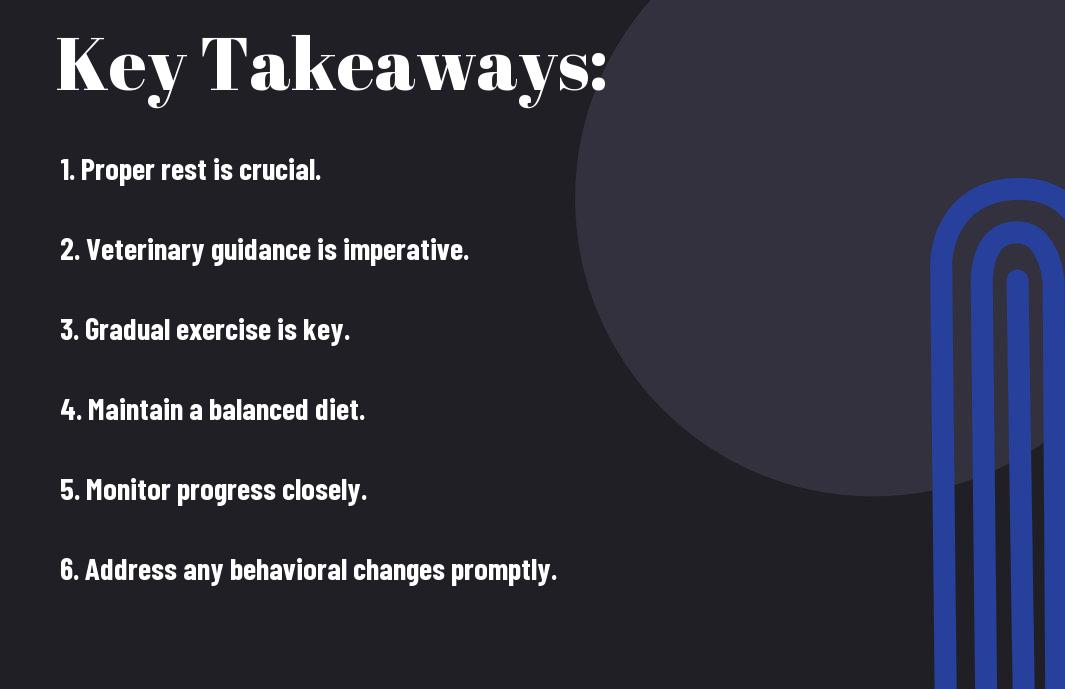
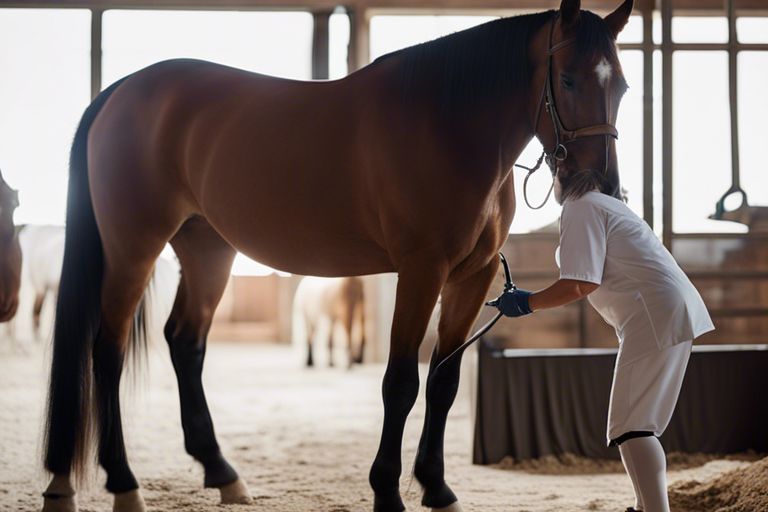
Identifying the Injury
Recognizing Signs of Injury
A crucial first step in rehabilitating an injured horse is identifying the extent and nature of the injury. Recognizing signs of injury is imperative for proper treatment. Common signs of an injury in a horse include lameness, swelling, heat in a particular area, reluctance to move, changes in behavior, and visible wounds. If you notice any of these signs in your horse, it is important to investigate further and seek veterinary guidance.
Conducting a Physical Examination
Signs such as lameness and swelling can indicate specific areas of concern in your horse’s body. Conducting a physical examination involves palpating the affected area, observing your horse’s movement, and checking for any abnormalities. It is crucial to assess the horse’s range of motion, response to touch, and any localized pain or discomfort. This examination helps in determining the severity of the injury and forming a treatment plan.
This thorough examination should be done in a quiet and controlled environment to prevent further stress or injury to the horse. Understanding the importance of a comprehensive physical examination is key to effectively addressing the injury and ensuring the horse’s proper rehabilitation.
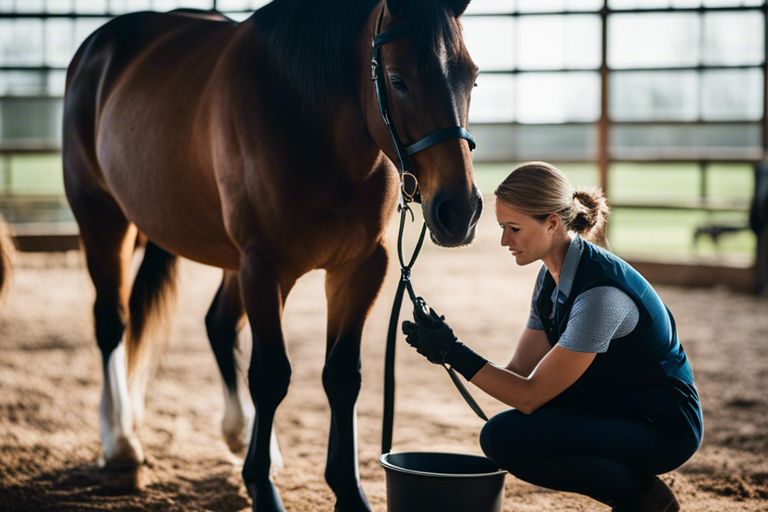
Creating a Rehabilitation Plan
Any successful rehabilitation plan starts with setting realistic goals and expectations. It’s imperative to understand that recovery from an injury is a gradual process and may take time. Consult with your veterinarian to establish achievable milestones for your horse’s progress. This will help you track their improvement effectively and prevent frustration.
Setting Realistic Goals and Expectations
Rehabilitation from an injury can be mentally and emotionally challenging, but staying positive and patient is crucial. Remember that each horse responds differently to treatment, so comparing their recovery to others may not be beneficial. Stay focused on your horse’s individual progress and celebrate each milestone achieved.
Developing a Customized Exercise Program
Developing a customized exercise program is vital to your horse’s rehabilitation plan. Consider your horse’s specific injury, fitness level, and age when creating the routine. The exercise program should include a combination of groundwork, controlled under-saddle work, and possibly physiotherapy exercises. Monitor your horse’s response to the exercises and adjust the program as necessary under the guidance of your veterinarian or equine therapist.
This tailored exercise regimen is crucial for a successful recovery, as it helps rebuild strength, flexibility, and coordination in the injured area. It’s imperative to start with gentle exercises and gradually increase the intensity as your horse progresses. Always prioritize your horse’s comfort and well-being throughout the rehabilitation process.
Managing Pain and Discomfort
Now that your horse is going through the rehabilitation process, it’s crucial to manage their pain and discomfort effectively. This will not only help them feel more comfortable but will also aid in their overall recovery. There are various options available to help alleviate your horse’s pain and make them more at ease during this challenging time.
Pharmaceutical Options
Any pain management plan for your injured horse may involve the use of **pharmaceutical options**. Your veterinarian may prescribe **nonsteroidal anti-inflammatory drugs (NSAIDs)** to help reduce inflammation and discomfort. Additionally, **pain relievers** such as **butorphanol** or **flunixin meglumine** may be recommended to ease your horse’s pain. It’s important to closely follow your veterinarian’s instructions regarding dosage and administration to ensure your horse’s safety and well-being.
Alternative Therapies (Acupuncture, Chiropractic, etc.)
To complement traditional pain management methods, you may also consider **alternative therapies** such as **acupuncture** or **chiropractic care** for your horse. These **alternative therapies** can help **alleviate pain**, **improve circulation**, and **promote healing**. Many horse owners have reported positive results from incorporating these holistic approaches into their horse’s rehabilitation program.
Understanding the benefits of **alternative therapies** can provide your horse with **additional relief** and **support** as they navigate the recovery process. **Acupuncture** and **chiropractic care** can help address underlying issues that may contribute to your horse’s discomfort, ultimately aiding in their **overall well-being** and **recovery**.
Rest and Recovery Strategies
Providing Adequate Rest and Relaxation
Not allowing your injured horse to rest and recover properly can hinder its healing process and potentially lead to further complications. It is crucial to create a comfortable and quiet environment for your horse to relax and recuperate. Ensure they have a clean and soft bedding, access to fresh water, and sufficient space to move around comfortably.
Implementing Gradual Exercise Progression
Progression: It is crucial to gradually reintroduce exercise to your horse’s routine to avoid reinjury and allow the muscles, tendons, and ligaments to strengthen over time. Start with short, light exercises such as hand-walking or light lunging before gradually increasing the intensity and duration of the workout. Overexerting your horse too soon can lead to setbacks in their recovery process, so it’s important to proceed with caution.
The key is to monitor your horse’s response to each exercise session carefully. If you notice any signs of discomfort, swelling, or lameness, it’s crucial to immediately stop the activity and consult with your veterinarian before proceeding further.
Physical Therapy and Exercise Techniques
All rehabilitation programs for injured horses should include a combination of physical therapy and exercise techniques to aid in the recovery process. These techniques are crucial in helping your horse regain strength, flexibility, and coordination after an injury.
Range of Motion Exercises
An important component of rehabilitating your injured horse is performing range of motion exercises. These exercises help maintain and improve joint flexibility, prevent stiffness, and reduce the risk of future injuries. It’s important to perform these exercises gently and gradually increase the range of motion over time to avoid causing any further harm.
Strengthening and Conditioning Exercises
Techniques for strengthening and conditioning exercises are vital for rebuilding muscle strength and overall conditioning in your injured horse. These exercises help improve muscle tone, endurance, and coordination, important for a successful recovery. For instance, incorporating exercises such as hill work, trot poles, and cavaletti work can aid in building muscle and improving balance.
Balance and Coordination Exercises
Exercise focusing on balance and coordination is crucial for an injured horse’s rehabilitation. These exercises help improve proprioception, spatial awareness, and overall balance, which are important for the horse’s agility and performance. Range of motion exercises, such as side-passing, backing up, and shoulder-in, can help improve your horse’s balance and coordination.
Nutrition and Supplementation
Optimizing Dietary Needs
Many factors influence the dietary needs of an injured horse during rehabilitation. Your horse’s energy requirements may vary depending on the extent of the injury and the stage of recovery. It’s crucial to work closely with your veterinarian or a qualified equine nutritionist to develop a feeding regimen tailored to your horse’s specific needs. Your horse may require a diet rich in high-quality forage, supplemented with a balanced concentrate to support healing and recovery.
Supplements for Enhanced Recovery
The use of supplements can play a crucial role in enhancing the recovery process for an injured horse. Any supplementation regimen should be carefully considered and discussed with a veterinary professional to ensure it is safe and appropriate for your horse. Certain supplements like joint support products and omega-3 fatty acids can aid in reducing inflammation, improving joint health, and supporting overall well-being during recovery.
Enhanced:
It’s important to note that while supplements can be beneficial in some cases, using them without professional guidance or in excess can have negative impacts on your horse’s health. Always consult with your veterinarian before introducing any new supplements to your horse’s diet to ensure you are making the best choices for their recovery.
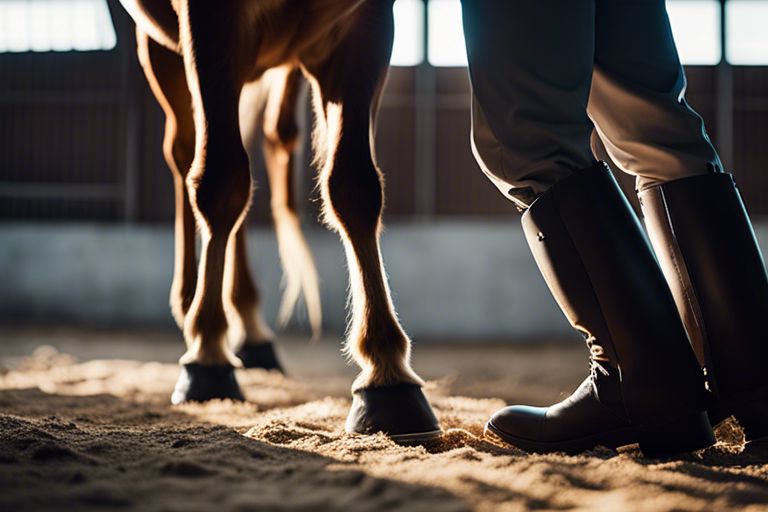
Monitoring Progress and Avoiding Setbacks
After starting treatment for your injured horse, it’s crucial to closely monitor their progress to ensure they are on the right track to recovery. Regular check-ups and assessments can provide valuable insights into your horse’s healing process and help you catch any potential setbacks early on.
Regular Check-Ups and Assessments
Progress: Schedule regular check-ups with your veterinarian to evaluate your horse’s rehabilitation progress. These assessments can include physical exams, imaging scans, and performance evaluations to track improvements and address any concerns that may arise.
By staying proactive and regularly monitoring your horse’s recovery, you can avoid setbacks and adjust their treatment plan accordingly to promote a successful rehabilitation process.
Identifying Potential Complications
Monitoring: While monitoring your horse’s progress, it’s necessary to keep an eye out for any potential complications that may arise during the rehabilitation process. Issues such as infection, inflammation, or behavioral changes can impact your horse’s recovery and require immediate attention.
Regular check-ups and assessments can help identify potential complications early on, allowing you to address them promptly and prevent any setbacks in your horse’s healing journey.
Final Words
As a reminder, rehabilitating an injured horse requires patience, dedication, and professional guidance. By following the proper strategies, such as implementing a tailored exercise regimen, providing a proper diet, and monitoring the horse’s progress closely, you can help your equine friend recover and thrive once again. Remember to consult with your veterinarian and equine professionals to create a customized rehabilitation plan that best suits your horse’s individual needs. With your attentive care and commitment, your injured horse will have the best chance at a successful recovery.
FAQ
Q: What are some common injuries that can occur in horses?
A: Common injuries in horses include tendon and ligament strains, muscle injuries, joint injuries, and wounds from accidents or kicks from other horses.
Q: How can I prevent injuries in my horse?
A: You can help prevent injuries in your horse by ensuring they have a safe environment to live in, using proper equipment that fits well, maintaining a balanced diet, and providing regular exercise and turnout.
Q: What are some strategies for rehabilitating an injured horse?
A: Strategies for rehabilitating an injured horse include providing veterinary care, following a structured rehabilitation program, incorporating therapies such as hydrotherapy or acupuncture, and gradually easing the horse back into work.
Q: How long does it typically take for a horse to recover from an injury?
A: The recovery time for a horse depends on the type and severity of the injury. Minor injuries may heal in a few weeks, while more serious injuries could take several months or longer to fully recover.
Q: When should I consult a veterinarian for my horse’s injury?
A: It is important to consult a veterinarian for any injury that is causing your horse significant pain, swelling, lameness, or difficulty moving. A veterinarian can provide a proper diagnosis and recommend the best course of treatment for your horse’s specific injury.
